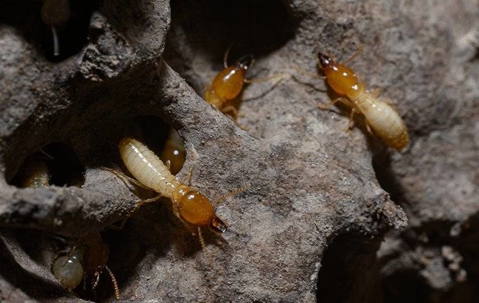Drywood termites are notorious for their ability to inflict catastrophic property damage while going entirely undetected until it's too late. Although it can seem impossible to stop these insidious wood-eaters, there's still hope – all it takes is the right set of knowledge, tools, and techniques.
The signs are there; they're difficult to recognize at first. We here at Go-Forth Home Services have put together this quick and easy guide to drywood termites.
Here, we'll outline the essentials of termite pest control in Columbia. Keep reading, and you'll learn how to identify termites, what an infestation looks like, and what you should do if you spot these destructive insects on your property.
Drywood Termites Habits and Behavior
Termite identification is challenging, but you can protect your property from these hungry tiny insects once you know what to look for. Drywood termites, in particular, are probably the worst type of termite you can have since this species prefers hard, dry wood such as the type found constituting most homes.
Depending on its age, an individual drywood termite will be a quarter-inch to an inch long, with an oval-shaped waist, straight antennae, six short legs, and a pair of wings.
Termites are elusive creatures, but you can identify them by their appearance, habits, and behavior. They usually have cream-colored exoskeletons. They live inside the wood they eat and form large colonies inside homes. Unlike other species, they have no worker caste, instead of allowing the immature termites to do the work of excavating.
Little Known Signs Of Drywood Termites
Although the signs of termites are surprisingly plentiful, they're notoriously difficult to notice unless you know exactly what you're looking for. It's essential to spot the signs of termites before they can cause too much damage. Here are a few of the little-known signs of a drywood termite infestation:
- Discarded insect wings littering your property
- Mounds of pellet-like droppings called frass
- Sagging walls
- Stuck doors or windows
- Loose tiles or creaky floorboards
The signs of termite damage can be subtle or mistaken for something else, but they're essential to recognize. If an infestation is allowed to fester, it could mean a catastrophe for your home.
How Often Should You Treat A House For Drywood Termites?
If you suspect you've spotted drywood termite swarmers on your property, you should seek professional termite treatment immediately. These pests can completely ruin your home if left unchecked. But how often should you treat your house for drywood termites? Should you treat it if you haven't noticed any termites yet?
Preemptive treatment is best, and a professional termite treatment plan can last you up to ten years. A certified termite expert near you can provide specific details tailored to your home's situation.
Whether you're dealing with an infestation or want to protect yourself from the possibility, professional termite treatment can help.
Action Plan For Treating Drywood Termites In Columbia
A termite infestation in your home is one of the most destructive and harrowing ordeals you can go through. Drywood termites cause billions of dollars in property damage every year, but you don't have to become a part of that statistic.
Although termite treatment and prevention can be challenging, it can also be surprisingly easy. All it takes is the right tools and techniques. The experts at Go-Forth Home Services are ready to provide exactly that.
Reach out to our team of trained pest control technicians, and we'll walk you through our complete termite action plan. Call now to schedule your inspection, and let us take care of the rest.

